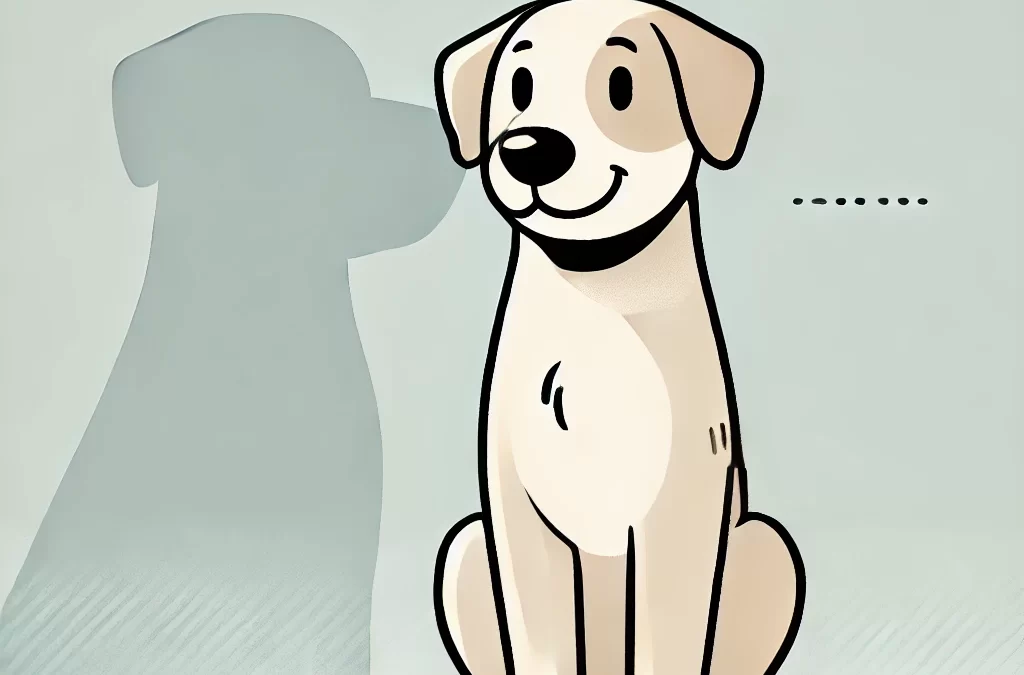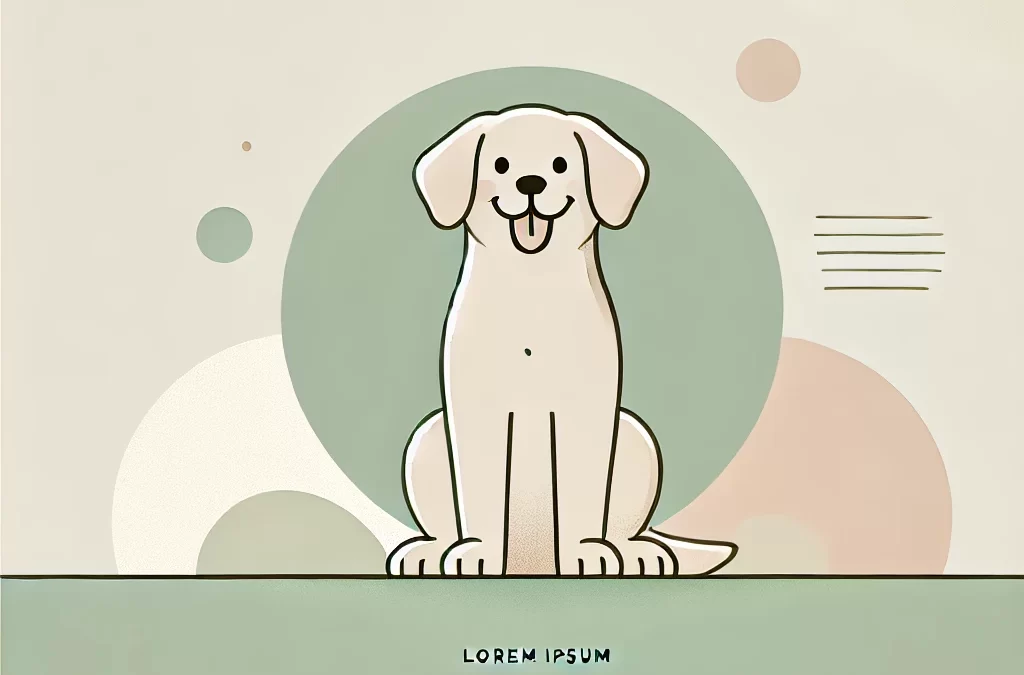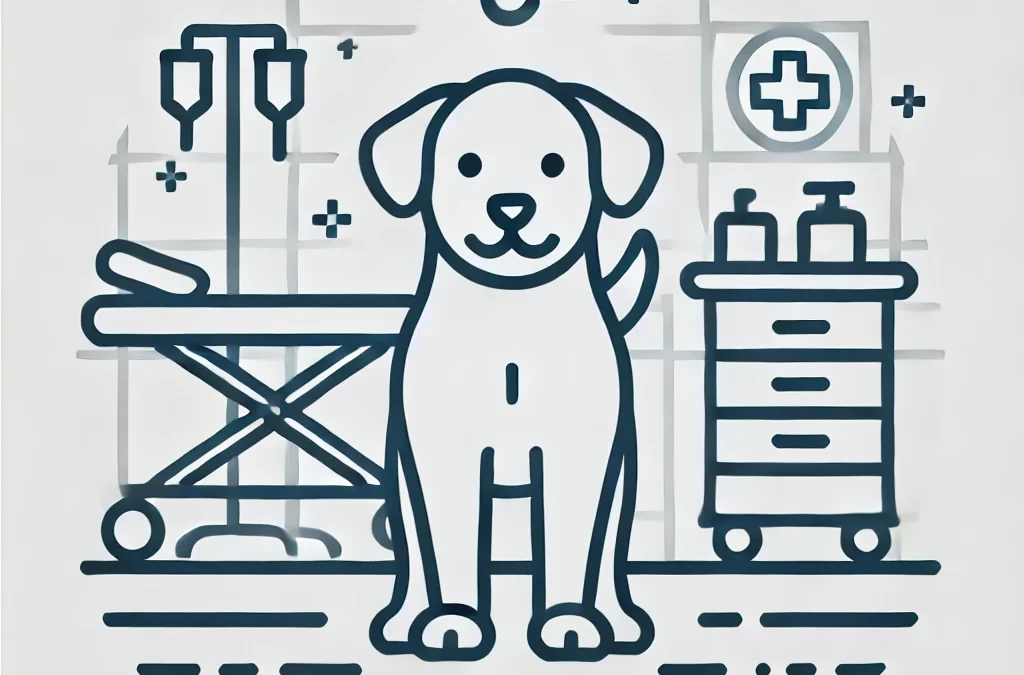
by TCMVET | Nov 22, 2024 | Dog Cancer & Tumors
Osteosarcoma, a type of bone cancer, is a challenging diagnosis for dog owners. While conventional treatments like amputation and chemotherapy can improve life expectancy, many seek natural therapies to support their pets’ quality of life. A balanced approach combining conventional methods with natural treatments can provide hope and comfort for dogs with osteosarcoma. Let’s explore innovative, holistic strategies that go beyond the conventional.
1. Nutritional Support: The Foundation of Healing
Nutrition plays a vital role in managing osteosarcoma. A diet tailored to fight inflammation and support immunity can make a significant difference.
- High-Quality Protein: Ensures muscle maintenance and combats weight loss. Sources include lean meats, fish, and eggs.
- Omega-3 Fatty Acids: Found in fish oil, these reduce inflammation and may slow cancer progression.
- Low-Carb Diet: Cancer cells thrive on glucose. Opt for a diet rich in vegetables like spinach and broccoli while avoiding grains and starchy vegetables.
Tip: Bone broth, rich in collagen and amino acids, soothes joints and provides gentle nourishment.
2. Herbal Allies in the Fight
Natural herbs can complement cancer management by targeting inflammation, enhancing immunity, and potentially slowing tumor growth.
- Turmeric (Curcumin): Known for its anti-inflammatory and anti-cancer properties. Combining turmeric with black pepper enhances absorption.
- Chuanxiong (Szechuan Lovage): A Traditional Chinese Medicine herb believed to support circulation and reduce tumor-related discomfort.
- Essiac Tea: A blend of herbs including burdock root and slippery elm, often used to boost detoxification and immune health.
Always consult with a vet trained in herbal medicine to ensure safety and proper dosing.
3. Targeted Supplements for Cellular Support
Supplements can act as allies in combating the effects of cancer and enhancing overall health.
- CBD Oil: Known for pain relief and potential anti-cancer effects, CBD oil can improve mobility and reduce anxiety in dogs with osteosarcoma.
- Medicinal Mushrooms: Varieties like turkey tail and reishi boost immunity and contain compounds that may inhibit tumor growth.
- Boswellia Serrata: An anti-inflammatory that may alleviate pain and support joint health.
Note: Always choose veterinarian-approved supplements and verify ingredient quality.
4. Physical and Emotional Wellbeing
- Acupuncture and Massage: Acupuncture can help manage pain, while gentle massage improves circulation and reduces stiffness.
- Moderate Exercise: Tailor activities to your dog’s ability, focusing on low-impact exercises like swimming.
- Emotional Support: Comfort and love play a pivotal role in a dog’s healing process. Spend quality time, engage in gentle play, and ensure a stress-free environment.
5. Emerging Therapies in the Natural Sphere
Innovative approaches are pushing the boundaries of natural treatments for canine osteosarcoma:
- Hyperbaric Oxygen Therapy (HBOT): Increases oxygen levels in the body, which can slow tumor growth and promote healing.
- Photodynamic Therapy (PDT): Uses light-sensitive compounds and laser technology to target tumors non-invasively.
- Peptide-Based Therapies: These innovative supplements stimulate the body’s natural healing processes at the cellular level.
6. Tailoring a Comprehensive Plan
Every dog is unique, and so should be their treatment plan. Combining natural and conventional therapies requires ongoing communication with your veterinarian. Holistic veterinarians trained in integrative medicine can offer personalized guidance.
A Heartfelt Reminder
While natural treatments provide support, they are most effective when used alongside conventional therapies. The goal is not merely to prolong life but to ensure a high quality of life for your beloved pet. With a compassionate and informed approach, you can offer your dog comfort, care, and love during this challenging journey.
By integrating modern insights with time-tested natural remedies, you give your dog the best chance for a life filled with joy and dignity. Together, we can redefine what healing looks like for dogs with osteosarcoma.

by TCMVET | Nov 21, 2024 | Dog Cancer & Tumors
When it comes to managing mast cell tumors in dogs, owners often find themselves navigating a sea of treatment options. Among these, cimetidine—a drug originally developed to treat ulcers—has gained attention for its potential to manage the symptoms and progression of this complex condition. But what exactly is its role, and how does dosage impact its effectiveness? Let’s dive into the topic with a fresh perspective.
What is Cimetidine?
Cimetidine belongs to a class of medications known as H2 receptor antagonists, designed to reduce stomach acid production. While its primary use is for gastrointestinal conditions, researchers have discovered additional benefits that extend its use to managing mast cell tumors in dogs.
The connection lies in histamine. Mast cell tumors release histamine, which can lead to various symptoms, including gastric ulcers and inflammation. By blocking H2 receptors, cimetidine can help mitigate these effects.
Why Use Cimetidine for Mast Cell Tumors?
- Symptom Management: Cimetidine reduces histamine release, helping to control symptoms like vomiting, diarrhea, and discomfort caused by increased gastric acidity.
- Tumor Stabilization: Some studies suggest that cimetidine may help slow tumor progression by altering the tumor microenvironment, although this effect remains under investigation.
- Supportive Role: Cimetidine is often used as part of a multi-modal approach, complementing treatments like surgery, chemotherapy, or natural therapies.
Dosage: Finding the Sweet Spot
Determining the correct dosage is crucial for achieving the desired therapeutic effect. However, a “one-size-fits-all” approach doesn’t work when it comes to dogs, as factors such as size, age, and overall health significantly influence dosing.
- General Guidelines: Cimetidine is usually administered orally at doses ranging from 5 to 10 mg per kilogram (2.2 lbs) of body weight, two to three times daily. However, always follow your veterinarian’s specific recommendations.
- Tailored Dosing: Dosages may vary based on the severity of symptoms, tumor stage, and whether the dog is receiving additional treatments. Adjustments are common and should be guided by regular monitoring.
The Importance of Vet Supervision
While cimetidine is relatively safe, it’s not without side effects. Potential issues include diarrhea, lethargy, or changes in appetite. Additionally, interactions with other medications should be carefully considered, especially if your dog is undergoing chemotherapy or using other drugs like NSAIDs.
Veterinary oversight ensures:
- Accurate dosing.
- Monitoring for side effects or interactions.
- Adjustments based on the dog’s response.
Alternative and Complementary Therapies
While cimetidine is an effective tool, it’s often most successful when combined with other therapies. Some alternatives include:
- Natural Supplements: Herbs like Chuanxiong (Szechuan Lovage) or turmeric may offer anti-inflammatory benefits and support overall well-being.
- Dietary Adjustments: A low-histamine diet can complement cimetidine’s effects, reducing histamine release triggered by certain foods.
- Holistic Care: Acupuncture, CBD oil, and other supportive therapies may help improve quality of life for dogs with mast cell tumors.
Future Innovations in Mast Cell Tumor Management
Emerging research continues to explore the role of cimetidine and similar drugs in veterinary oncology. From targeted therapies to histamine inhibitors, the future of treating mast cell tumors in dogs holds promise for more personalized and effective solutions.
Key Takeaways
Cimetidine is a valuable ally in managing mast cell tumors, but its effectiveness hinges on proper usage and integration into a broader treatment plan. By working closely with your veterinarian and staying informed about new developments, you can give your dog the best chance at a comfortable and happy life.
Closing Thoughts
If your dog has been diagnosed with mast cell tumors, don’t hesitate to explore all available options. While cimetidine may not be a cure, its ability to manage symptoms and support overall treatment makes it an important part of the puzzle. With tailored care and a holistic approach, your furry friend can continue to thrive despite the challenges.

by TCMVET | Nov 21, 2024 | Dog Cancer & Tumors
When a beloved dog faces health challenges, pet owners often turn to modern diagnostics to uncover the issue. Among these, ultrasound has become a go-to tool for veterinarians. But how effective is it in detecting cancer in dogs? Let’s explore this question in-depth, examining both the strengths and limitations of this technology.
The Basics of Ultrasound in Veterinary Medicine
Ultrasound imaging, also known as sonography, uses sound waves to create real-time images of a dog’s internal organs. It is particularly useful for examining soft tissues, such as the liver, kidneys, spleen, and bladder. Unlike X-rays, which provide a static view, ultrasound offers dynamic visuals, enabling veterinarians to assess organ function and detect abnormalities.
How Ultrasound Detects Cancer
Ultrasound can help identify tumors, abnormal tissue growths, or irregular organ structures that may indicate cancer. For instance:
- Locating Tumors: Ultrasound can reveal the size, shape, and location of masses. This is especially helpful for cancers in the abdomen, such as liver or kidney tumors.
- Guiding Biopsies: While ultrasound cannot definitively diagnose cancer, it plays a critical role in guiding needle biopsies to extract tissue samples for laboratory analysis.
- Monitoring Progression: For dogs undergoing treatment for cancer, ultrasound is a valuable tool for monitoring how the disease responds to therapies.
The Limitations of Ultrasound in Cancer Detection
Despite its advantages, ultrasound has certain limitations:
- Cannot Confirm Cancer: Ultrasound can identify masses but cannot determine whether they are malignant (cancerous) or benign (non-cancerous). A biopsy or advanced imaging, such as MRI or CT scans, is usually required for confirmation.
- Operator Dependency: The accuracy of ultrasound depends on the skill and experience of the veterinarian. Misinterpretation of images can lead to false positives or negatives.
- Not Suitable for All Cancers: Ultrasound is less effective for detecting cancers in bones, lungs, or areas with dense structures. In such cases, other imaging techniques are more appropriate.
When to Consider Ultrasound for Your Dog
If your dog shows symptoms such as unexplained weight loss, vomiting, swelling, or lethargy, your vet may recommend an ultrasound as part of the diagnostic process. It is a non-invasive, painless procedure with minimal risk, making it a preferred first step in many cases.
Future Innovations: Enhancing Ultrasound’s Cancer-Detecting Capabilities
Advances in veterinary medicine are continually improving ultrasound technology. Techniques like contrast-enhanced ultrasound and elastography are emerging as promising tools for better identifying cancerous tissues. These innovations could soon make ultrasound more precise in distinguishing malignant from benign growths.
A Balanced Approach to Cancer Diagnosis
While ultrasound is a powerful diagnostic tool, it works best as part of a comprehensive diagnostic approach. Combining ultrasound with other techniques, such as blood tests, biopsies, and advanced imaging, ensures the most accurate diagnosis and effective treatment plan for your dog.
Final Thoughts
Ultrasound is an indispensable tool in veterinary medicine, offering valuable insights into a dog’s health. While it has its limitations, it plays a crucial role in detecting and managing cancer. By staying informed and working closely with your vet, you can ensure your furry companion receives the best care possible, even in the face of challenging diagnoses.
4o

by TCMVET | Nov 20, 2024 | Dog Cancer & Tumors
Canine Transmissible Venereal Tumor (TVT) is a unique form of cancer in dogs, primarily transmitted through direct contact. While veterinary intervention is typically necessary, there’s growing interest in home-based supportive care to complement medical treatment. In this article, we’ll explore how innovative, natural, and holistic practices can play a pivotal role in managing TVT at home, emphasizing the importance of partnership with a veterinarian.
Understanding TVT: A Quick Overview
TVT is a contagious tumor that affects dogs’ external genitalia, mouth, or nose. Common symptoms include:
- Visible tumor growths
- Bleeding or discharge
- Discomfort or pain in affected areas
The primary treatment includes chemotherapy (usually with vincristine), surgery, or radiotherapy. However, these treatments may not always be accessible or affordable for some pet owners. This is where home-based supportive care can make a difference.
Revolutionizing Home Care for Dogs with TVT
1. Immune-Boosting Nutrition
A dog’s immune system plays a critical role in combating cancer. Providing nutrient-dense meals can support their overall health. Consider:
- Lean protein sources: Turkey, chicken, and fish to maintain muscle mass.
- Cancer-fighting foods: Blueberries, carrots, and broccoli contain antioxidants that combat oxidative stress.
- Omega-3 fatty acids: Found in fish oil or flaxseed oil, these help reduce inflammation.
Pro Tip: Avoid foods high in sugar and grains, which can exacerbate tumor growth.
2. Natural Remedies and Herbs
Natural therapies can provide relief and help manage TVT symptoms. Some promising options include:
- Turmeric (Curcumin): Known for its anti-inflammatory and anti-tumor properties.
- Chuanxiong (Szechuan Lovage): A traditional Chinese herb believed to improve circulation and support healing.
- CBD oil: Can help reduce inflammation, manage pain, and improve overall comfort.
Important: Always consult a vet to determine safe dosages.
3. Creating a Stress-Free Environment
Stress can weaken your dog’s immune system. Ensure your pet has a calm and comforting environment by:
- Providing a quiet resting space away from household noise.
- Using calming aids like lavender essential oil diffusers (in a well-ventilated room).
- Engaging in light, low-stress activities to keep them active and happy.
4. Wound and Tumor Care
If external tumors are present, they may bleed or become infected. Home care includes:
- Gently cleaning the affected area with saline solution to prevent infection.
- Using veterinary-approved ointments to promote healing.
- Monitoring for signs of infection, such as redness, swelling, or foul odor.
5. Strengthening Gut Health
Dogs undergoing TVT treatments often suffer from digestive issues. Probiotics and prebiotics can improve gut health and enhance nutrient absorption. Yogurt (without added sugar) or veterinary probiotic supplements can be added to their diet.
6. Alternative Therapies
- Acupressure and Massage: Can help improve blood circulation and reduce pain.
- Homeopathy: Remedies like Arsenicum album or Thuja are sometimes used for cancer support (under veterinary guidance).
What Home Treatment Can and Cannot Do
While these approaches can enhance your dog’s comfort and overall well-being, they cannot replace professional medical care. TVT is a serious condition that often requires chemotherapy or other veterinary treatments for a cure. Home care is best used as a complementary approach to improve your dog’s quality of life and support recovery.
A Holistic Approach Is Key
The idea of treating TVT at home isn’t about finding a miracle cure but about creating an environment where your dog feels nurtured and supported. By combining veterinary treatment with innovative home care practices, you can give your furry friend the best chance at recovery.
Final Thought
Managing TVT at home demands commitment, creativity, and collaboration with veterinary professionals. It’s not just about treating a disease; it’s about restoring hope, health, and happiness to your dog’s life. With this holistic approach, pet owners can take an active role in their dog’s healing journey, ensuring they receive the love and care they deserve.

by TCMVET | Nov 18, 2024 | Dog Cancer & Tumors
Leukemia in dogs is often referred to as a “silent illness.” By the time symptoms surface, the disease may already have advanced. But what if we could listen to the subtle whispers of this hidden enemy before it strikes loudly? Recognizing the early signs of leukemia in dogs can not only save their lives but also drastically improve their quality of life. Let’s embark on an unconventional exploration of these early warning signals, blending clinical insights with a holistic approach to canine care.
Decoding the Subtle Hints
Leukemia often masquerades as other, less serious illnesses. Early detection requires a sharp eye and an intuitive understanding of your dog’s behavior. Here are the understated signs to watch for:
- Unusual Fatigue or Lethargy Your usually energetic pup suddenly prefers lounging over playtime. This lethargy isn’t just a result of aging or a rough day; it’s the body’s way of signaling that something deeper might be amiss.
- Pale Gums and Tongue Healthy gums should be a bubblegum pink. If your dog’s gums or tongue appear pale or white, it could indicate anemia, a common early sign of leukemia caused by low red blood cell production.
- Persistent or Unexplained Infections Frequent infections that don’t respond to treatment may point to a weakened immune system. Leukemia compromises white blood cell function, leaving dogs vulnerable to bacterial, fungal, or viral invasions.
- Swollen Lymph Nodes Enlarged lymph nodes, particularly around the neck, shoulders, or back legs, are a telltale sign that something is wrong. While not exclusive to leukemia, it’s a sign worth investigating.
- Unexplained Weight Loss A dog with leukemia may lose weight despite maintaining its appetite. This occurs because the disease hijacks the body’s resources, leading to muscle wasting and energy depletion.
- Bruising or Bleeding Watch for small red or purple dots under the skin (petechiae) or unexplained bruises. Leukemia disrupts platelet production, leading to clotting issues.
- Loss of Appetite or Vomiting While these symptoms are common to many illnesses, their persistence could signal an underlying issue like leukemia.
Why Early Detection Matters
The earlier leukemia is detected, the better the treatment outcomes. Many dog owners assume that occasional lethargy or loss of appetite is normal, especially in older dogs, but ignoring these signs could mean missing an opportunity for timely intervention. Routine blood tests are a simple yet powerful tool in catching leukemia before it progresses.
Beyond the Clinical: The Emotional Connection
Dogs are masters at hiding pain. Often, behavioral changes such as withdrawing from family interactions or seeming “off” are early emotional cues of distress. Building a deep connection with your pet allows you to pick up on these subtleties.
Holistic Perspectives on Canine Leukemia
While traditional treatments like chemotherapy and steroids are common, integrating holistic care can enhance your dog’s quality of life. Here are some options:
- Nutritional Support
- Include foods rich in antioxidants like blueberries and spinach to boost the immune system.
- Bone broth provides essential nutrients and helps maintain appetite.
- Natural Supplements
- Turmeric: Its anti-inflammatory properties can support overall well-being.
- Reishi Mushrooms: Known for their immune-boosting and anti-cancer properties.
- Stress Management
- Gentle massages and aromatherapy with dog-safe oils like lavender can alleviate stress, which may exacerbate symptoms.
- Herbal Remedies
- Traditional Chinese Medicine herbs like astragalus and dang shen may support immunity and energy levels.
Preventive Measures: Can We Stay Ahead?
While leukemia isn’t always preventable, certain actions may lower risk factors:
- Regular Veterinary Check-Ups: Annual blood panels can identify abnormalities early.
- Limit Exposure to Toxins: Avoid pesticides, herbicides, and smoking around pets.
- Maintain a Healthy Diet: Balanced, nutrient-rich diets keep your dog’s immune system robust.
When to Act
If your dog exhibits more than one of these early signs, don’t wait. Consult a veterinarian immediately. A simple blood test can provide answers, and if leukemia is diagnosed, early intervention can extend your dog’s life significantly.
A Glimpse of Hope
Leukemia doesn’t have to be a death sentence. With advancements in veterinary care, holistic support, and the unwavering love of a pet parent, dogs diagnosed with leukemia can live fulfilling lives. The key lies in vigilance, education, and taking proactive steps.
Conclusion
The early signs of leukemia in dogs are like whispers in the wind—easily overlooked but vital to hear. By staying attuned to your dog’s physical and emotional cues, you can intercept this hidden enemy before it takes hold. After all, our four-legged companions deserve nothing less than our absolute best in their times of need.

by TCMVET | Nov 16, 2024 | Dog Cancer & Tumors
When we hear the word “tumor,” our minds often leap to the worst-case scenario: cancer. However, not all tumors are malignant. In fact, benign intestinal tumors in dogs are far less sinister and can often be managed effectively with the right approach. This article dives into the nuances of these benign growths, helping you understand their causes, symptoms, and management strategies.
What Are Benign Intestinal Tumors?
Benign intestinal tumors are non-cancerous growths that develop in the gastrointestinal (GI) tract of dogs. While they don’t invade surrounding tissues or spread to other parts of the body, their presence can still lead to discomfort or digestive issues if they grow large enough to obstruct the intestines or interfere with normal function.
Common Types of Benign Intestinal Tumors in Dogs:
- Adenomas: Develop from glandular cells lining the intestines.
- Leiomyomas: Originate from smooth muscle cells in the intestinal wall.
- Polyps: Small growths that protrude from the lining of the intestines.
Causes: Why Do These Tumors Develop?
While the exact cause of benign intestinal tumors in dogs is unknown, several factors may contribute:
- Genetics: Some breeds, like German Shepherds and Collies, may have a predisposition.
- Chronic Inflammation: Long-term GI inflammation can increase the risk of abnormal cell growth.
- Dietary Factors: Poor-quality diets lacking fiber may play a role in polyp development.
Symptoms: What to Watch For
Benign tumors often grow slowly, making symptoms subtle at first. Over time, as the tumor enlarges, the following signs may appear:
- Chronic Vomiting or Diarrhea: Due to irritation or partial blockage.
- Weight Loss: If the tumor affects nutrient absorption.
- Blood in Stool: Bright red or dark, depending on the tumor’s location.
- Abdominal Pain: If the tumor causes bloating or obstruction.
- Change in Appetite: Fluctuations between hunger and refusal to eat.
Red Flag: Any persistent GI symptom warrants a visit to your veterinarian for a thorough evaluation.
Diagnosis: Pinpointing the Problem
Diagnosing benign intestinal tumors involves a combination of techniques:
- Physical Exam: Palpation of the abdomen for masses.
- Imaging: X-rays or ultrasounds to visualize the intestinal tract.
- Endoscopy: A camera-assisted examination to view and potentially biopsy the growth.
- Biopsy: Definitive diagnosis comes from analyzing a tissue sample to determine if the tumor is benign.
Treatment: Options for Managing Benign Tumors
While benign tumors aren’t life-threatening, they often require treatment to alleviate symptoms or prevent complications.
1. Surgical Removal
- When Is Surgery Needed? If the tumor causes obstruction or severe symptoms.
- Outcome: Surgery is typically curative for benign growths, and dogs recover well post-operation.
2. Endoscopic Polypectomy
- What Is It? A less invasive method to remove polyps or small tumors via an endoscope.
- Advantages: Shorter recovery time and minimal discomfort.
3. Dietary Adjustments
- Why It Helps: A high-fiber diet may reduce inflammation and support gut healing after treatment.
- Foods to Include: Pumpkin, cooked sweet potatoes, and vet-recommended kibble.
4. Monitoring
- For Small Tumors: Regular check-ups to monitor growth without immediate intervention.
Prognosis: What to Expect
Benign intestinal tumors generally have an excellent prognosis when treated appropriately. Regular veterinary visits and follow-ups are crucial to ensure the tumor doesn’t recur or cause further issues.
Prevention: Can You Lower the Risk?
While it’s impossible to guarantee prevention, the following steps may reduce your dog’s risk of developing benign intestinal tumors:
- Balanced Diet: Include high-quality proteins, healthy fats, and sufficient fiber.
- Regular Vet Visits: Routine check-ups can catch potential issues early.
- Watch for Symptoms: Early detection often leads to simpler, less invasive treatments.
A Unique Perspective: The Gut and Overall Health
Interestingly, your dog’s gut health is closely tied to their overall well-being. The presence of a benign tumor might signal underlying imbalances, like inflammation or poor diet, that deserve attention. Treating the tumor is just one part of the journey—addressing the root causes ensures your dog remains healthy and vibrant.
Conclusion: Turning Challenges into Opportunities
Benign intestinal tumors in dogs, while concerning, are manageable and often curable. They offer a reminder to prioritize gut health, provide nutritious meals, and maintain a strong partnership with your veterinarian. With care and vigilance, your furry companion can continue to enjoy a happy, comfortable life.






